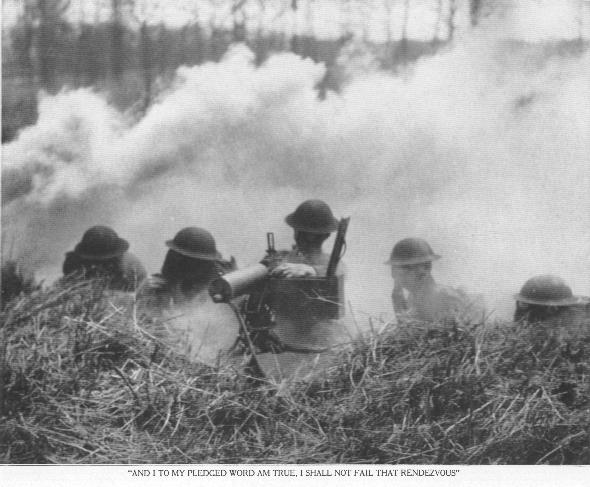

37. By nightfall of the 29th the First Army line was approximately Bois de la Cote Lemont湧antillois輸premont耀outhwest across the Argonne. Many divisions, especially those in the center that were subjected to cross-fire of artillery, had suffered heavily. The severe fighting, the nature of the terrain over which they attacked, and the fog and darkness sorely tried even our best divisions. On the night of the 29th the Thirty-seventh and Seventy-ninth Divisions were relieved by the Thirty-second and Third Divisions, respectively, and on the following night the First Division relieved the Thirty-fifth Division.
38. The critical problem during the first few days of the battle was the restoration of communications over "no man痴 land." There were but four roads available across this deep zone, and the violent artillery fire of the previous period of the war had virtually destroyed them. The spongy soil and the lack of material increased the difficulty. But the splendid work of our engineers and pioneers soon made possible the movement of the troops, artillery, and supplies most needed. By the afternoon of the 27th all the divisional artillery, except a few batteries of heavy guns, had effected a passage and was supporting the infantry action.
39. At 5:30 a. m. on October 4 the general attack was renewed. The enemy divisions on the front from Fresnes-en-Woevre to the Argonne had increased from 10 in first line to 16, and included some of his best divisions. The fighting was desperate, and only small advances were realized, except by the First Division on the right of the First Corps. By evening of October 5 the line was approximately Bois de la Cote Lemont-Bois du Fays-Gesnes-Hill 240-Fleville-Chehery, southwest through the Argonne.
It was especially desirable to drive the enemy from his commanding positions on the heights east of the Meuse, but it was even more important that we should force him to use his troops there and weaken his tenacious hold on positions in our immediate front. The further stabilization of the new St. Mihiel line permitted the withdrawal of certain divisions for the extension of the Meuse-Argonne operation to the east bank of the Meuse River.
40. On the 7th the First Corps, with the Eighty-second Division added, launched a strong attack northwest toward Cornay, to draw
Continue
Back
Table of Contents
Back to Legacy